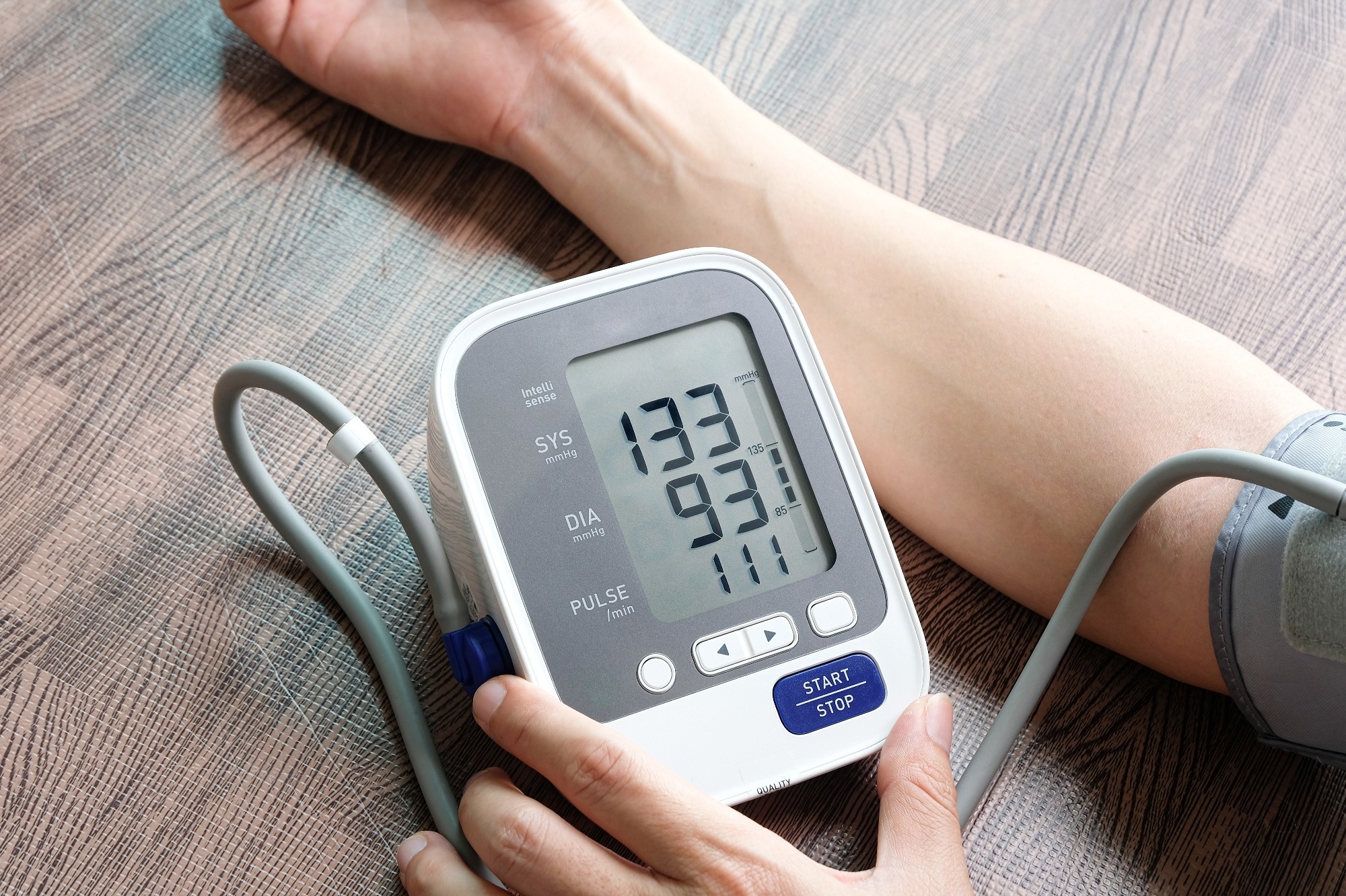Hypertension is one of the most common chronic conditions, affecting more than a billion people worldwide. It is a major cause of premature mortality and a leading risk factor for cardiovascular disease (CVD). Moreover, BP control is poor, with only one in five hypertensive adults satisfying recommended BP goals. Further, there are concerns that BP control might have worsened during the COVID-19 pandemic.
Lockdown mandates during COVID-19 have caused significant changes in daily routine, with reduced physical activity, increased alcohol consumption, social stress, disrupted sleep, and unhealthy diets, which negatively impact BP. In addition, patient access to regular healthcare was limited due to many healthcare practices introduced during the pandemic. Besides, there is limited information on how the COVID-19 pandemic has impacted BP control at a population level.
 Study: Changes in Blood Pressure Outcomes Among Hypertensive Individuals During the COVID-19 Pandemic: A Time Series Analysis in Three US Healthcare Organizations. Image Credit: Me dia / Shutterstock
Study: Changes in Blood Pressure Outcomes Among Hypertensive Individuals During the COVID-19 Pandemic: A Time Series Analysis in Three US Healthcare Organizations. Image Credit: Me dia / Shutterstock
About the study
The present study evaluated BP outcomes in hypertensive adults during the COVID-19 pandemic. Electronic health record (EHR) data from August 2019 to November 2020 were extracted from three health systems in the United States (US). The extracted information included patient demographic characteristics, diagnoses, BP values, and primary care visit dates.
The study period was stratified into pre-pandemic (August 2019 – January 2020), transition (February and March 2020), and pandemic (April – November 2020.) periods. Adult participants (18 years or older) were eligible if they visited primary care with a hypertension diagnosis in the first six months of the pre-pandemic period. Visits to primary care were defined as those to internal or family medicine clinicians.
The researchers examined two outcomes: 1) mean systolic and diastolic BPs and 2) the prevalence of controlled BP, i.e., systolic BP less than 140 mmHg and diastolic BP less than 90 mmHg. These outcomes were evaluated every week during the study period. BP readings measured during emergency department visits and hospitalizations were not considered.
Self-reported race, ethnicity, age, sex, median household income, alcohol use, Charlson comorbidity index (CCI), and smoking status were the covariates. An interrupted time-series design was implemented to evaluate whether the slopes/levels of BP outcomes changed during the pandemic period relative to pre-pandemic levels.
Findings
The study included 137,593 participants; their average age was 66.2 years. Most participants were White (62.1%) and female (57.2%). On average, each participant had 11 BP measurements throughout the study. More than 77% of participants had controlled BP during the pre-pandemic period.
BP measurements decreased in the transition period, with substantial declines early in the pandemic and gradual increases later. The pooled number of BP measurements by the end of the study was lower than the pre-pandemic levels. This was because 15.6% of participants lacked BP measurements during the transition/pandemic period, and BP measurements were less frequent during these periods.
The mean systolic and diastolic BP increased by 1.79 mmHg and 1.3 mmHg during the pandemic compared to pre-pandemic levels after adjusting for patient characteristics and seasonality. The slope for diastolic BP decreased during the pandemic relative to baseline, while that for systolic BP was not significantly different from baseline.
The proportion of individuals with controlled BP declined by 3.43 percentage points during the pandemic relative to the pre-pandemic period. The stratified analysis revealed that individuals aged 65 or above had a greater increase in diastolic BP than those below 65 years. There were no differences in BP or BP control changes between males and females. Likewise, sensitivity analyses found results comparable to the primary analysis.
Conclusions
The researchers found stark declines in BP measurements in the early pandemic period, which rebounded gradually in the later phases without ever reaching the baseline levels of the pre-pandemic period. A small yet significant increase in systolic and diastolic BP was observed during the pandemic, with a decrease in BP control.
The study included only those already engaged in the health system before the COVID-19 pandemic and may not fully represent the source population. Notably, the study participants were followed for the first eight months of the pandemic, and whether these BP trends sustain over the long term remains unknown.